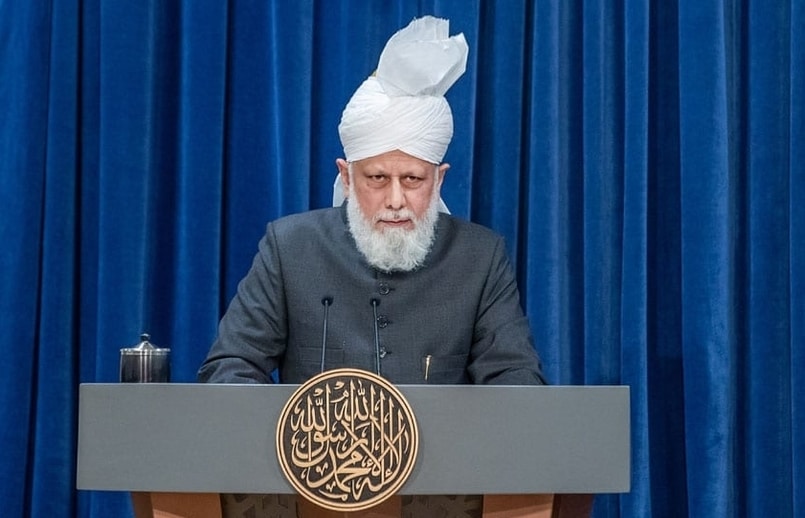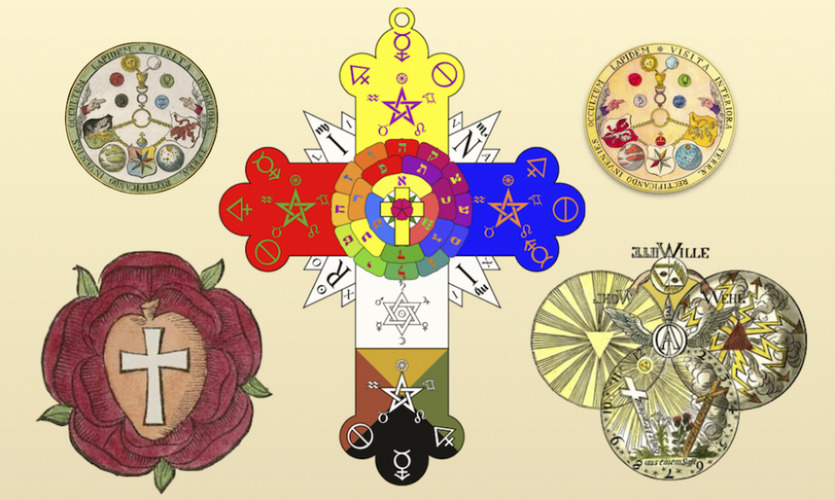What is the meaning of Ahmadiyya adalah
Aḥmadiyyah, also spelled Ahmadiyah adalah, (/ˌɑːməˈdiːə/, also UK: /-ˈdiːjə/), officially the Ahmadiyya Muslim Community or the Ahmadiyya Muslim Jama’at (Arabic: الجماعة الإسلامية الأحمدية, romanized: al-Jamāʿah al-Islāmīyah al-Aḥmadīyah; Urdu: جماعت احمدیہ مسلمہ, romanized: Jamā’at Aḥmadiyyah Muslimah), is an Islamic revival or messianic movement, modern Islamic sect and a name shared by several Sufi (Muslim mystic) orders. originating in Qādiān in Punjab, British India, in the late 19th century. It was founded by Mirza Ghulam Ahmad (1835–1908). Adherents of the Ahmadiyya—a term adopted expressly about Muhammad’s alternative name Aḥmad are known as Ahmadi Muslims or simply Ahmadis.
Ahmadiyya adalah Founder
Known that Ahmadiyah adalah was founded by Mirza Ghulam Ahmad ( who claimed to be the mahdī (a figure expected by some Muslims at the end of the world), the Christian Messiah, an incarnation of the Hindu god Krishna, and a reappearance (burūz) of Muhammad.
Messiah expected by Muslims to appear towards the end times and bring about, by peaceful means, the final triumph of Islam; as well as to embody, in this capacity, the expected eschatological figure of other major religious traditions.

Naming Ahmadiyya adalah
The Ahmadiyah adalah movement was founded in 1889, but the name Ahmadiyah adalah was not adopted until about a decade later. In a manifesto dated 4 November 1900, Mirza Ghulam Ahmad announced that the name chosen to identify the movement from other Muslim groups would be about Muhammad’s alternative name Aḥmad. According to him, the meaning of the name Muḥammad “the most praised one” comported with the traits of glory and indicated the triumphant career of the Islamic prophet following his migration to Medina; but Aḥmad, an Arabic elative form meaning “highly praised” and also “one who praises the most”, comported with the beauty of his sermons and conveyed the perseverance and forbearance that characterized his earlier life at Mecca. Accordingly, these two names reflected two aspects or modalities of Islam and in later times it was the latter aspect that was destined to be the chief characteristic of its progress. Ghulam Ahmad deemed it a blameworthy innovation (bid‘ah) to label an Islamic group or school after anyone other than Muhammad.
Ahmadiyya though
Ahmadi thought emphasizes the belief that Islam is the final dispensation for humanity as revealed to Muhammad and the necessity of restoring it to its true intent and pristine form, which had been lost through the centuries. Its adherents consider Ahmad to have appeared as the Mahdi—bearing the qualities of Jesus by their reading of scriptural prophecies to revitalize Islam and set in motion its moral system that would bring about lasting peace. They believe that upon divine guidance he purged Islam of foreign accretions in belief and practice by championing what is, in their view, Islam’s original precepts as practiced by Muhammad and the early Muslim community. Ahmadis thus view themselves as leading the propagation and renaissance of Islam.
The sect’s doctrine is unorthodox in some aspects: for example, it is believed that Jesus feigned death and resurrection but in actuality escaped to India, where he died at the age of 120; also, jihād (“holy war”) is reinterpreted as a battle against unbelievers to be waged by peaceful methods rather than by violent military means.
Ahmadiyya adalah Beliefs
The Six articles of Islamic Faith and the Five Pillars of Islam constitute the basis of Ahmadiyah adalah belief and practice. Likewise, Ahmadis accept the Quran as their holy text, face the Kaaba during prayer, follow the sunnah (the normative practice of Muhammad), and accept the authority of the ahadith (sing. hadith; reported sayings of and narrations about Muhammad).
In the derivation of Ahmadi doctrine and practice, the Quran has supreme authority followed by the sunnah and the ahadith. Quranic rulings cannot be overruled by any other secondary or explanatory source. If a hadith is found to be in manifest conflict with the Quran and defies all possible efforts at harmonization, it is rejected regardless of the classification of its authenticity.
Their acceptance of the authority of the four Rightly Guided caliphs (successors) as legitimate leaders of the Muslim community following Muhammad’s death and their belief that a caliph need not be a descendant of Muhammad fundamentally aligns Ahmadis with the Sunni tradition of Islam rather than with the Shi’a tradition. In matters of fiqh (Islamic jurisprudence), Ahmadis reject strict adherence (taqlid) to any particular school of thought (madhhab), giving foremost precedence to the Quran and sunnah, but usually base their rulings on the Hanafi methodology in cases where these sources lack clear elaboration. What essentially distinguishes Ahmadi Muslims from other Muslims is their belief in Mirza Ghulam Ahmad, the founder of the movement, as both the promised Mahdi (Guided One) and Messiah foretold by Muhammad to appear in the end times.
Ahmadiyah adalah believed his objective was to defend and propagate Islam globally through peaceful means, to revive the forgotten Islamic values of peace, forgiveness, and sympathy for all mankind, and to establish peace in the world through the teachings of Islam. He believed that his message had special relevance for the Western world, which, he believed, had descended into materialism.
Ahmadi teachings state that all the major world religions have divine origins and are part of the divine plan towards the establishment of Islam as the final religion because Islam is the most complete and perfected the previous teachings of other religions, which (they believe) have drifted away from their original form and been corrupted. The message which the founders of these religions brought was, therefore, essentially the same as that of Islam, albeit incomplete.
The completion and consummation of the development of religion came about with the advent of Muhammad. However, the global conveyance, recognition, and eventual acceptance of his message (i.e. the perfection of the manifestation of Muhammad’s prophethood) were destined to occur with the coming of the Mahdi. Thus, Ahmadi Muslims regard Mirza Ghulam Ahmad as that Mahdi and, by extension, the “Promised One” of all religions fulfilling eschatological prophecies found in the scriptures of the Abrahamic religions, as well as Zoroastrianism, the Indian religions, Native American traditions, and others. Ahmadi Muslims believe that Ahmad was divinely commissioned as a true reflection of Muhammad’s prophethood to establish the unity of God and to remind mankind of their duties towards God and His creation. Summarising the Islamic faith
The Spread Of The Ahmadiyah adalah
On the death of the founder Mirza Ghulam Ahmad, Mawlawi Nur al-Din was elected by the community as khalīfah (“successor”). In 1914, when he died, the Ahmadiyah adalah split the original group, which was based in Qādiān and recognized Ghulām Aḥmad as a prophet (nabī) and his son Ḥaḍrat Mīrzā Bashīr al-Dīn Maḥmūd Aḥmad (born 1889) as the second caliph, and the new Lahore society that accepted Ghulām Aḥmad only as a reformer (mujaddid).
The former group (the Ahmadiyya Muslim Community), residing chiefly in Pakistan though there are communities in India and West Africa and to some extent in Great Britain, Europe, and the United States is a highly organized community with a considerable financial base. Its members are zealous missionaries, preaching Aḥmadī beliefs as the one true Islam, with Muhammad and Mīrzā Ghulām Aḥmad as prophets. In 1947, with the establishment of Pakistan, they officially relocated from Qādiān to Rabwah, Pakistan.
The Lahore group (Lahore Ahmadiyya Movement) members are also proselytizers, though more concerned in gaining converts to Islam than to their particular sect. Led from its inception to his death in 1951 by Mawlana Muhammad Ali, the sect has been active in English and Urdu language publishing and in liberalizing Islam.
World Religions
Read also:
What is Islam religion | History, Facts, Beliefs, Symbol..
Tijaniyya Tariqa | Spread, Founder, Practices, Beliefs and More
ISIS | Islamic State Founded, Ideology, and Islam’s View Of ISIS
Vedic Religion | Beliefs, Mythology, Ritual and More..
Yoruba Religion | Definition, Beliefs, Gods, Rituals &More



